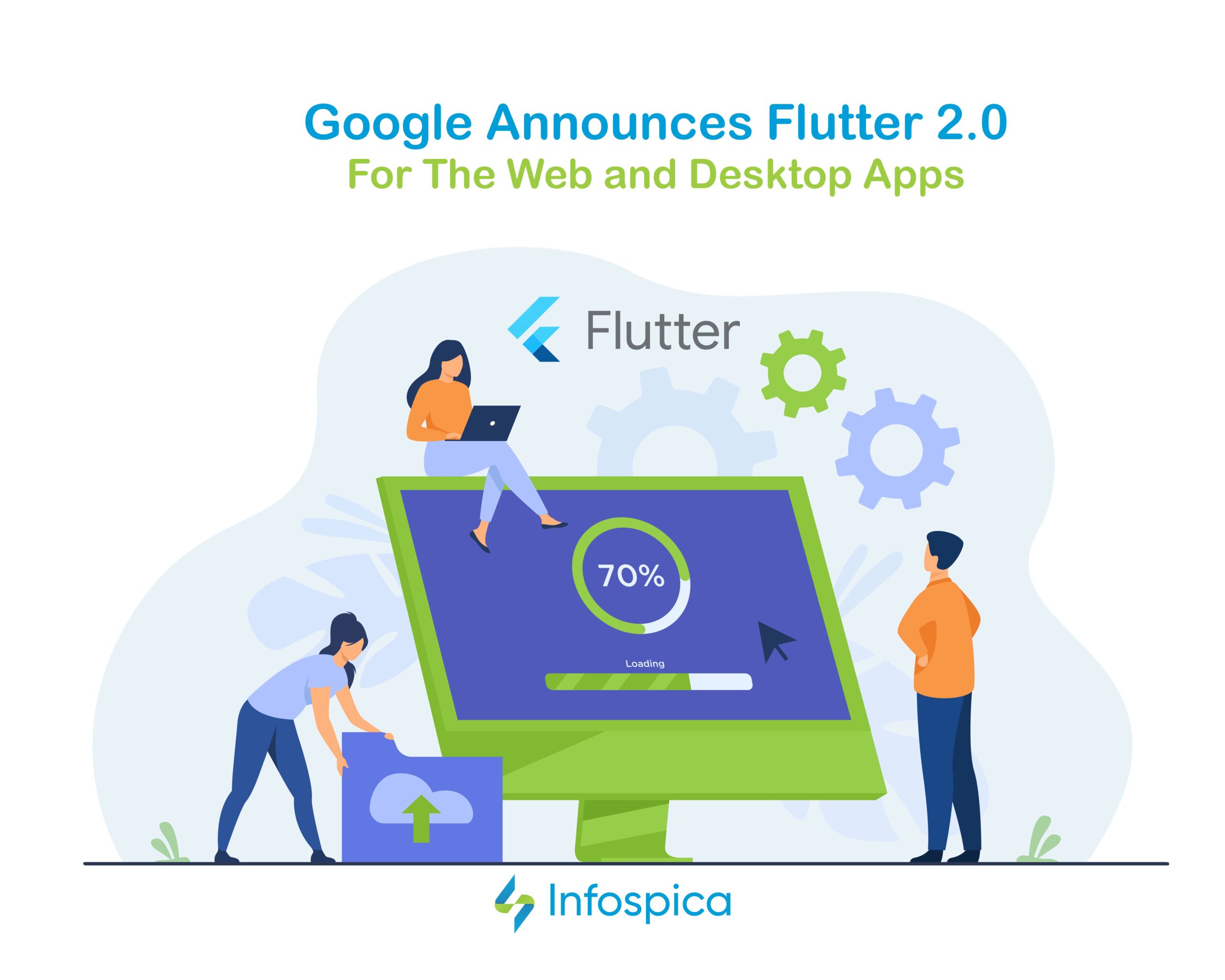How Flutter 2.0 Increases Web Support

Flutter 2.0 is an open-source UI development kit that helps app developers develop cross-platform apps using a similar codebase. According to Google, the new version of Flutter 2.0 adds support for web development. Using Flutter 2.0, you can utilize a similar codebase for shipping native applications to 5 Operating Systems: Android, iOS, macOS, Windows, and Linux. Now, it gives web experiences targeting browsers like Edge, Safari, Firefox, and Chrome. You can embed Flutter 2.0 in TVs, cars, and smart home apparatus, which gives the most portable and pervasive experience for an encompassing computing world.
The main improvement in Flutter 2 is support for the web, specifically including platform APIs that support hardware-accelerated 2D and 3D graphics and flexible layout and paint APIs.
How Flutter Support Web?
Flutter’s web support provides an app-focused framework that reaps the full benefits of everything that the modern web should provide. Initially, this release concentrates on 3 app scenarios:
1- Single Page Apps (SPAs) – Flutter’s web support enables complex standalone web apps that are rich with graphics and interactive content to reach end-users on a wide variety of devices.
2- Progressive Web Apps (PWAs) – Flutter delivers high-quality PWAs that are integrated with a user’s environment, including installation, offline support, and tailored UX.
3- Bringing current Flutter mobile apps to the web – Web support for Flutter provides a browser-based delivery model for existing Flutter mobile apps.
Google essentially focused on enhancements and performance to their rendering care. They added a new CanvasKit based render made with WebAssembly. CanvasKit renderer is fully consistent with Flutter mobile and desktop, has faster performance with higher widget density, but adds about 2MB in download size.
What are the Web-specific features of Flutter?
One of the many reasons to bring the existing Flutter app to the web is to reach users outside of app stores since the web has strength in global reach. To do this feature Google added support for custom URL strategies, to ensure that it’s possible for the users to reach the app anywhere with just a click of a URL. With this feature, we have control over the URLs shown in the address bar as well as the routing of the app on the web.
Flutter 2 is particularly suitable for implementing Progressive Web Apps, or PWAs. PWAs are a good fit for bridging the gap between mobile applications and web apps in a safe and trusted manner through the efforts of Chrome’s Project Fugu.
The new features have driven other tech companies to create supported software for Flutter 2. Microsoft even has announced that it will be releasing contributions to the engine, specifically for foldable Android devices. For those of you who already have an existing Flutter web app, you can now build your app in a stable channel. If you are new to building Flutter web apps, check out flutter.dev